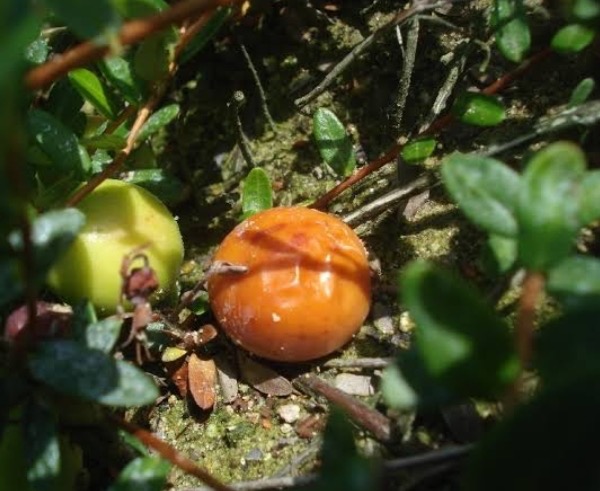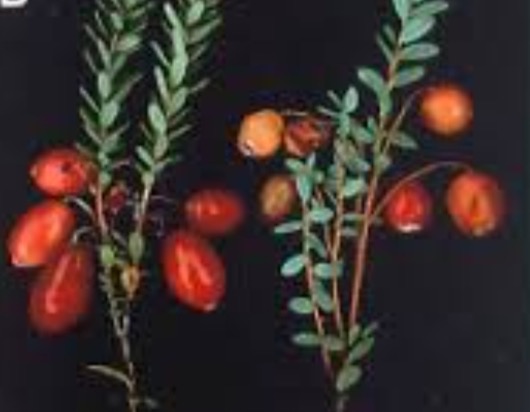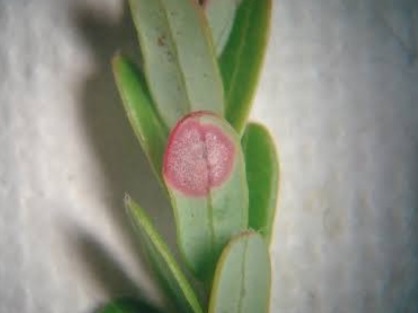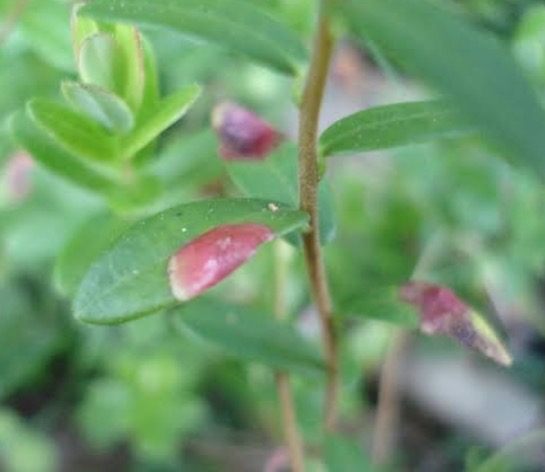Cranberry Shrub
Cranberry shrubs, 8-10 inches in height and suited for Zones 2-7, prefer acidic, well-drained soil under full sun to partial shade. Known for their tart and edible berries, cranberries are commonly used in cooking and beverages.
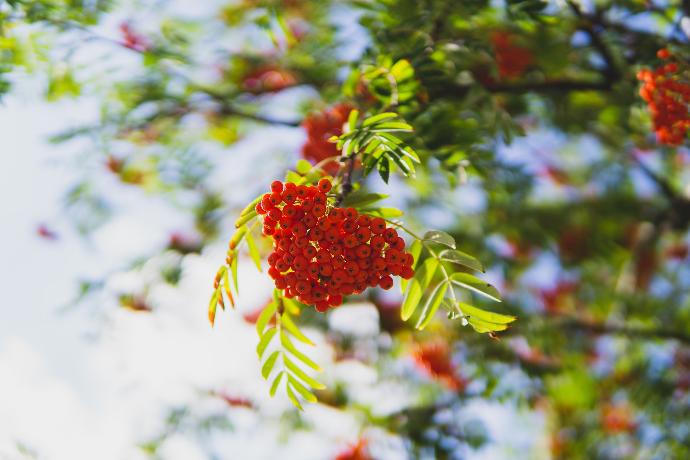
Habit
Shrub
Height
20 to 50 cm
Growth
Moderate
Soil
Acidic, Well Drained
Shade
Full sun to partial shade
Moisture
Moist
Edible
Yes
Medicinal
Yes
Origin
North Americal
Climatic Condition
Temperate, cold
Temperature (°)
-7 to 15°C
Humidity (%)
80 to 90
Potting media
Peat moss mix
Fertilizers
High in phosphorus
Watering
Keep consistently moist
Plant Weight
100 to 200 g
Flowering Time
Late Summer to Fall
Soil Ph level
4.0 to 5.5
Water Ph level
5.0 to 5.5
Soil EC
Low
Yield Per Plant
1 to 3 kg per vine
NPK ratio
10:10:10
life Span
perennial
Health Benefits
Suggested Grow Media or Potting Mix ?
50% peat moss, 30% sand, 20% compost
Suggested Fertigation/Fertilizers
Fertilize every 4 weeks with an acidic fertilizer.
Common Diseases and Remedies
fruit rot,red leaf.
round, circular, discoloured splotches that take on bull's eye pattern of altenating dark and light rings , presence of circular bright red spots on the upper sides of leaves .
:aloe vera gel and honey paste,baking soda.
HEALTH BENEFITS
- Urinary Tract Health: Prevents and treats urinary tract infections (UTIs).
- Heart Health: Contains flavonoids that support cardiovascular function.
- Antioxidant-Rich: Supports immune function and reduces inflammation.
What Is An Cranberry Tree ?
The cranberry plant, scientifically referred to as Vaccinium macrocarpon, is a small evergreen shrub indigenous to North America, thriving in acidic bogs and marshes. Known for their tartness, cranberries are commonly utilized in juices, sauces, and baked goods and are prized for their potential health benefits, particularly for urinary tract health, thanks to their abundance of antioxidants and anti-inflammatory properties . A cranberry plant, classified under the genus Vaccinium, is a perennial evergreen shrub that produces tart, red berries widely used in culinary dishes like juices, sauces, and baked goods. It is native to North America and is commonly grown in acidic bogs or marshes.
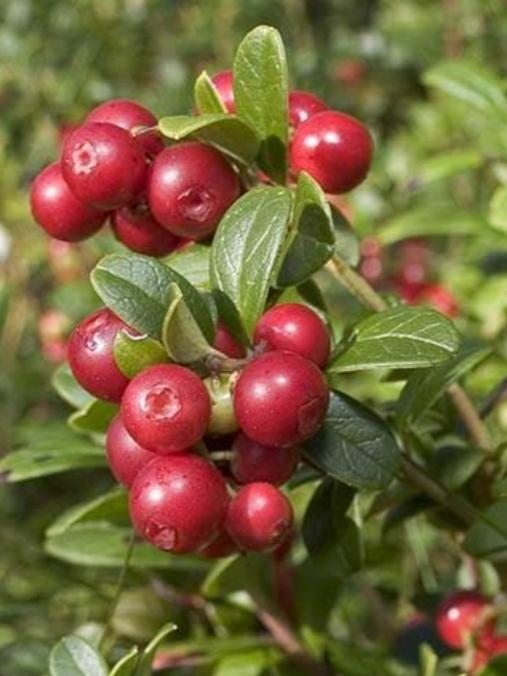
What Are The Different Types Of Cranberry Plants?
There are two main types of cranberry plants: American Cranberry, with large, tart berries grown for commercial production, and European Cranberry, known for smaller, acidic berries found in the wild or cultivated in Europe.

How to care for Cranberry Plants ?
1. Location
Cranberry plants are usually located in wet areas in cool regions, native to North America and commonly cultivated in states like Massachusetts, Wisconsin, New Jersey, Oregon, and Washington, as well as in certain areas of Canada. They are typically grown outdoors, needing acidic soil and lots of sunlight, usually found in bogs or fields.
2. Sunshine
The cranberry plant needs sunlight, either partially or fully, in order to thrive and bear fruit. Sufficient sunlight is necessary for photosynthesis, a key process for the plant's growth and fruiting. Light - plant in full sun
3. Soil
The ideal soil for cranberry plants has a pH of 4.0-5.5, good drainage, and high organic matter. Sandy or peat soils are often chosen. Keeping the soil moist is crucial for growth. A mix of pant soil, cocopeat, and cranberry plant manure can create a nutrient-rich soil for cranberries. Pant soil provides minerals, cocopeat improves structure and moisture retention, and cranberry manure adds specific nutrients. Mixing these ingredients properly creates the perfect growing medium for cranberries.
4. Hydration
Cranberry plants need regular moisture for proper growth, especially in their growing season. They thrive best in acidic, sandy soil that holds water well, but can also be grown in bogs or wetlands with consistent water supply. Proper irrigation is key to keeping cranberries hydrated. Daily water needs in extreme weather can be around 0.20-0.25 inches per acre, with a weekly recommendation of one inch from rain, groundwater, or irrigation.

5. Nourishment
Cranberry plants prefer acidic, well-draining soil with a pH of 4.0-5.5, full sun, and regular moisture. Fertilize sparingly with a balanced mix of nitrogen, phosphorus, and potassium in early spring, and add compost to enhance soil quality and fertility.
6. Issues
Cranberry plants can face several issues, including:
Disease: Common diseases affecting cranberries include fruit rot, root rot, and fungal infections like phytophthora and botrytis.
Pests: Insects such as cranberry fruit-worm, cranberry weevil, and sparganothis fruit-worm can damage cranberry plants and reduce yields.
Environmental Stress: Cranberries are sensitive to environmental factors like water availability, temperature extremes, and soil conditions. Drought, frost, and poor drainage can all affect plant health.
Nutrient Deficiencies: Lack of essential nutrients such as nitrogen, phosphorus, or potassium can lead to stunted growth, poor fruit development, and overall plant weakness.
Weed Competition: Weeds can compete with cranberry plants for resources like water, nutrients, and sunlight, reducing their growth and productivity.
Fruit Quality Issues: Factors like poor pollination, improper irrigation, or inadequate pest control can result in reduced fruit quality, affecting marketability.
Proper management practices, including regular monitoring, timely pest and disease control, and optimizing growing conditions, can help mitigate these issues and promote healthy cranberry plant growth.
What Are the Benefits Of Cranberry Plants ?
Cranberry plants offer various advantages: Rich in antioxidants, vitamins, and fiber for overall health. Consuming cranberries may prevent UTIs and support digestive health. Antioxidants in cranberries may aid heart health and potentially prevent certain cancers. Cranberries also benefit oral and skin health.
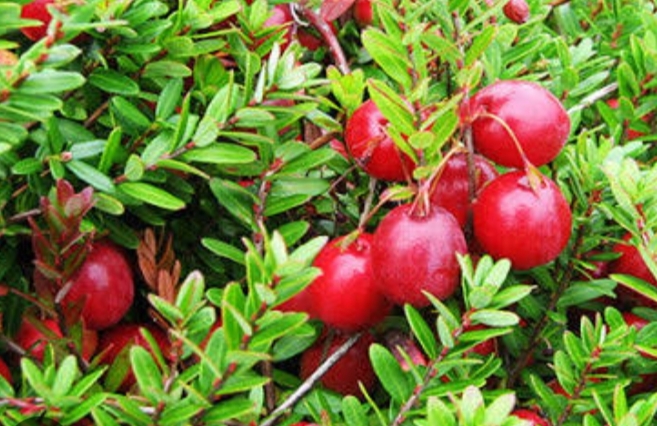
FAQs About Growing Cranberry
1. What are the health benefits of consuming cranberries?
Cranberries offer various health benefits including promoting urinary tract health, providing antioxidant properties, improving heart health, aiding in digestion, potentially preventing cancer, and supporting the immune system. Consuming cranberries in fresh, dried, or juice form can help achieve these benefits when part of a balanced diet.
2. When is the best time to harvest cranberries?
Typically, the ideal time to pick cranberries is during the autumn season, from mid-September to early November, varying by location and weather. Harvesting is generally done when the berries are a rich red shade and at their ripest.
3. How do we protect cranberry plant from pests and diseases?
To protect cranberry plants from pests and diseases, various strategies can be employed. These include rotating crops with unrelated plants, maintaining sanitation in cranberry beds to prevent pest and disease build-up, introducing beneficial insects for biological control, using pesticides as a last resort while following recommended guidelines, adjusting cultural practices like irrigation and pruning to prevent disease development, and regularly monitoring plants for early signs of pests or diseases.
4. What are some culinary uses of cranberry plant?
Cranberries can be utilized in various ways in cooking. They can be used to make sauces and relishes for poultry, baked goods like muffins and cakes for a tart flavour and colour, sprinkled on salads for sweetness, made into jams and preserves, used in beverages such as cocktails and smoothies, in chutneys to pair with cheese or meats, as dried snacks or in marinades for meats or tofu to add flavour. There are numerous ways to get creative with cranberries in the kitchen.
5. Can cranberries be grow in containers?
Certainly, cranberries can thrive in containers, particularly if you opt for smaller varieties. Ensure the container has sufficient space for the roots, good drainage, and acidic soil. Also, ensure to place the container in a sunny location and water consistently, as cranberries need full sun and consistent moisture.
